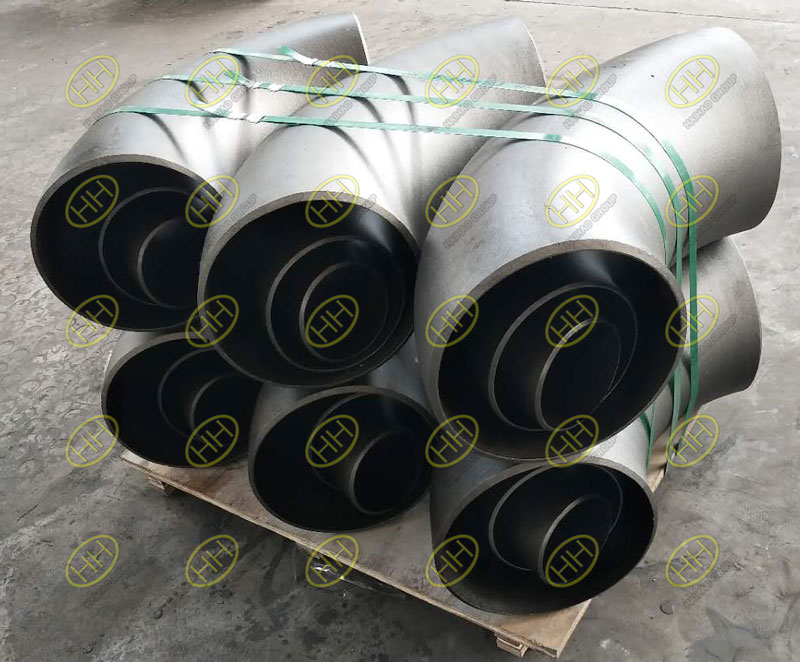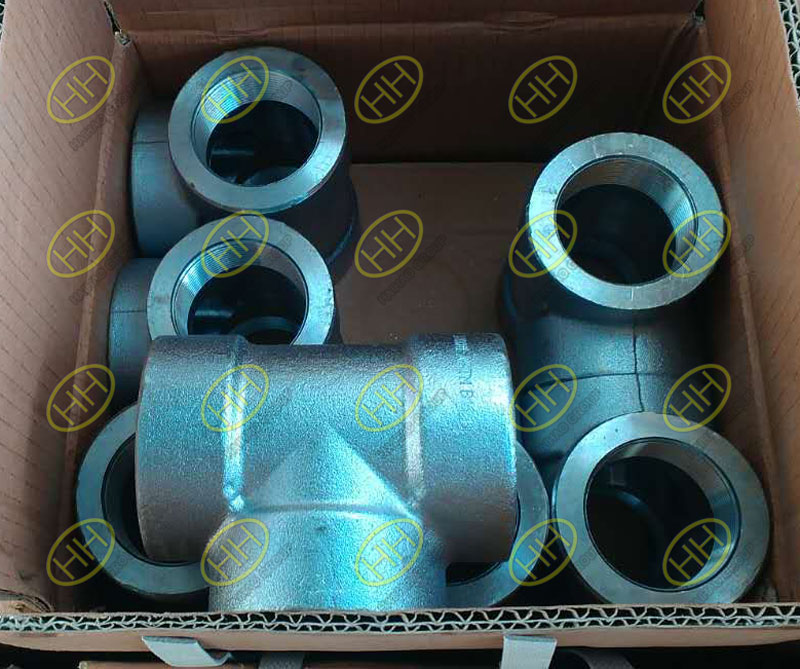Difference between ANSI /ASME B16.9 pipe fittings and ANSI /ASME B16.11 pipe fittings
Two of the most commonly used standards for pipe fittings are ANSI/ASME B16.9 and ANSI/ASME B16.11.In this article, we will explore the differences between these two standards and the types of fittings they cover.

ASME B16.9 90 degree short radius elbows
ANSI/ASME B16.9 is a standard specification for factory-made wrought steel buttwelding fittings. Butt welding fittings are used for connecting pipes of different diameters, thicknesses, and materials in a priority piping system. The pipe fittings are made from materials such as carbon steel, stainless steel, alloy steel, and nickel alloys, and they come in various shapes such as tees, elbows, reducers, caps, and crosses.
The ANSI/ASME B16.9 standard covers fittings primarily designed for use with Schedule 10 to Schedule XXS and heavier wall thickness piping. The standard specifies the dimensions, tolerances, materials, and testing requirements for butt-welding fittings of nominal sizes ranging from ½ inch to 48 inches. The pipe fittings conform to ASME B36.10 for their dimensions and ASME B16.25 for their ends.

ASME B16.11 threaded equal tees
ANSI/ASME B16.11 pipe fittings
ANSI/ASME B16.11 is a standard specification for forged steel fittings, socket-welding, and threaded. Socket-welding and threaded fittings are used for connecting pipes with smaller diameters, such as in low-pressure and non-critical applications. The fittings are made from materials such as carbon steel, stainless steel, alloy steel, and nickel alloys, and they come in various shapes such as tees, elbows, crosses, unions, and couplings.
The ANSI/ASME B16.11 standard covers pipe fittings designed for use with Schedule 80,XS,Schedule 60 and XXS piping. The fittings have socket-weld or threaded ends and are manufactured using one or more of the following forging methods: hammer, press, or impression die. The standard specifies the dimensions, tolerances, materials, and testing requirements for forged fittings of nominal sizes ranging from 1/8 inch to 4 inches.
Difference between ANSI /ASME B16.9 pipe fittings and ANSI /ASME B16.11 pipe fittings
The main differences between ANSI/ASME B16.9 and ANSI/ASME B16.11 pipe fittings are derived from their applications, sizes, and end connections.
- Application: ANSI/ASME B16.9 pipe fittings are primarily used in high-pressure and critical applications where butt-welded joints provide superior strength and leak-tightness. On the other hand, ANSI/ASME B16.11 pipe fittings are used in low-pressure and non-critical applications where socket-weld or threaded connections provide convenience and quick assembly.
- Size: ANSI/ASME B16.9 pipe fittings are designed for larger pipe diameters ranging from ½ inch to 48 inches, whereas ANSI/ASME B16.11 pipe fittings are designed for smaller pipe diameters ranging from 1/8 inch to 4 inches.
- End connections: ANSI/ASME B16.9 pipe fittings have butt-weld ends that require welding to the mating ends of the pipes. ANSI/ASME B16.11 pipe fittings have socket-weld or threaded ends that require inserting the pipe end into the fitting socket or threading the pipe end onto the fitting, respectively.
At Haihao Group, we are committed to providing our customers with the highest quality products and services.If you are looking for high quality ANSI /ASME B16.9 pipe fittings and ANSI /ASME B16.11 pipe fittings,looke no further than Haihao Group.Our extensive range of pipe fittings, combined with our commitment to quality and safety, ensures that you get the best possible solution for your needs.Email:sales@haihaogroup.com
